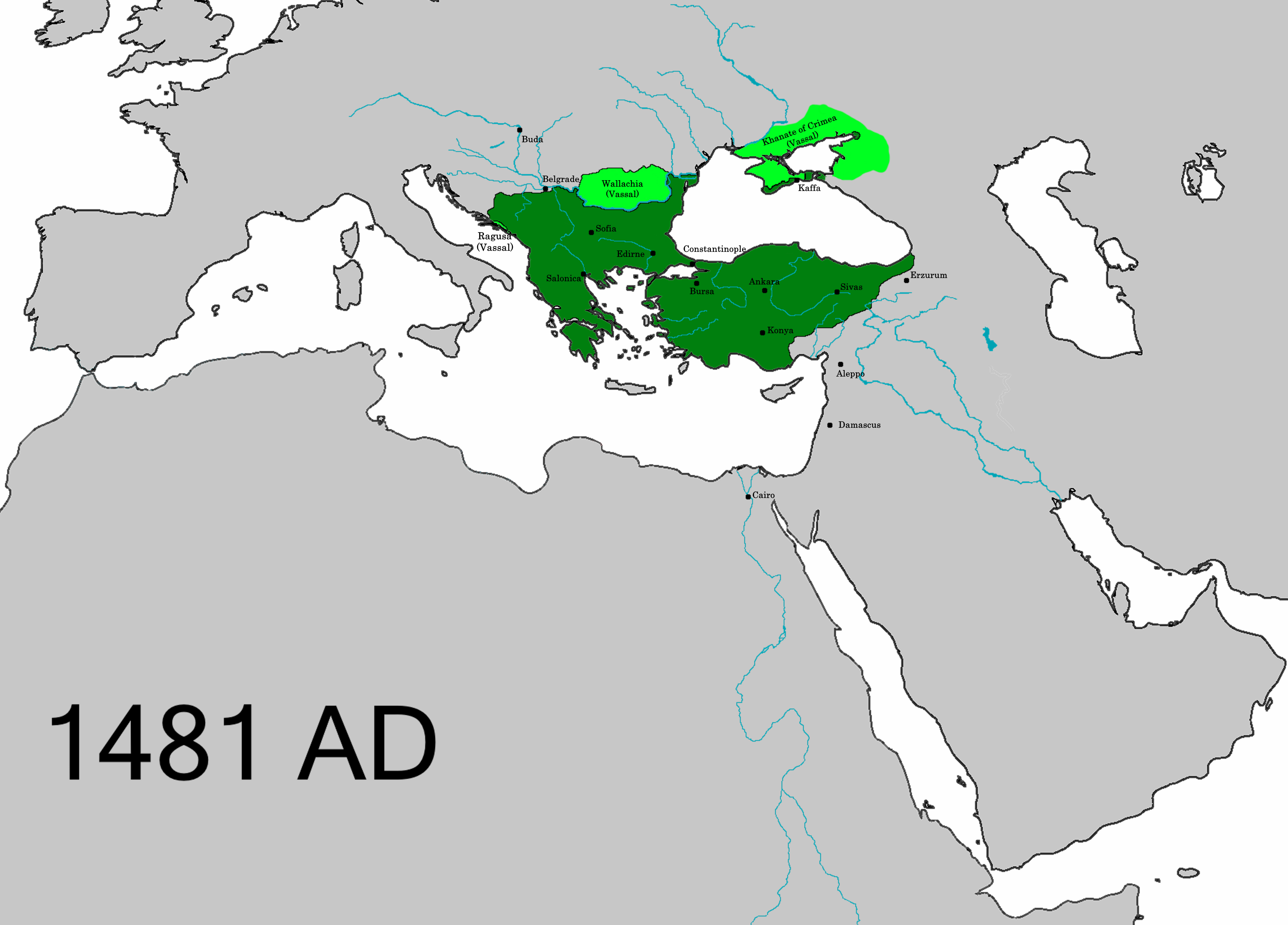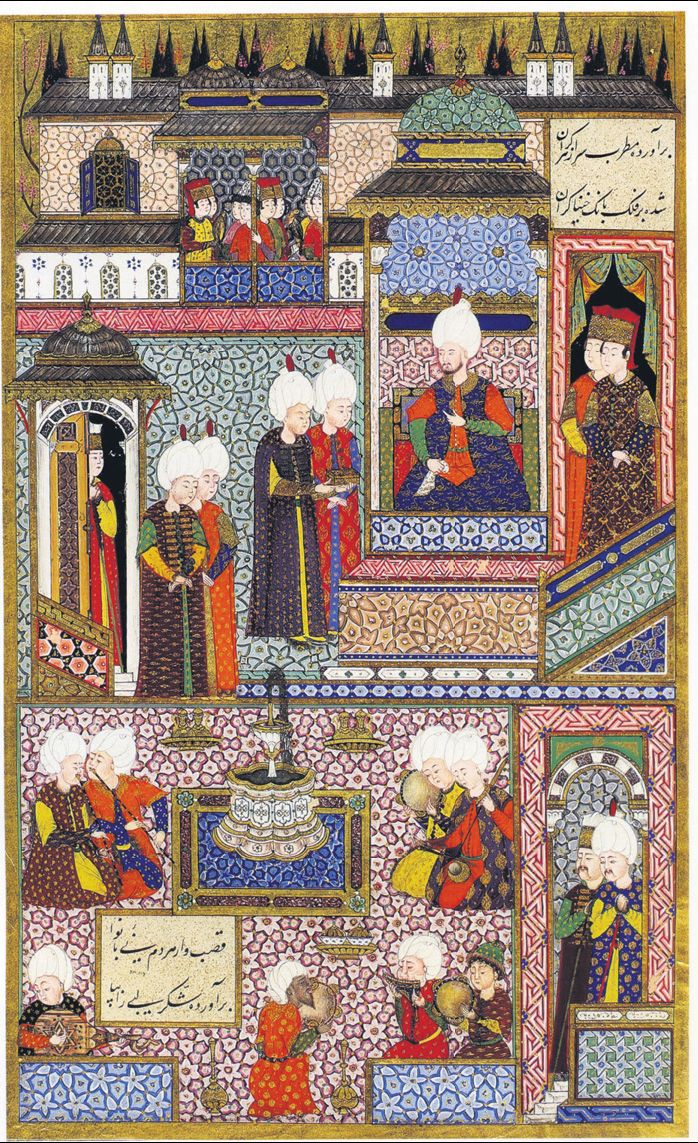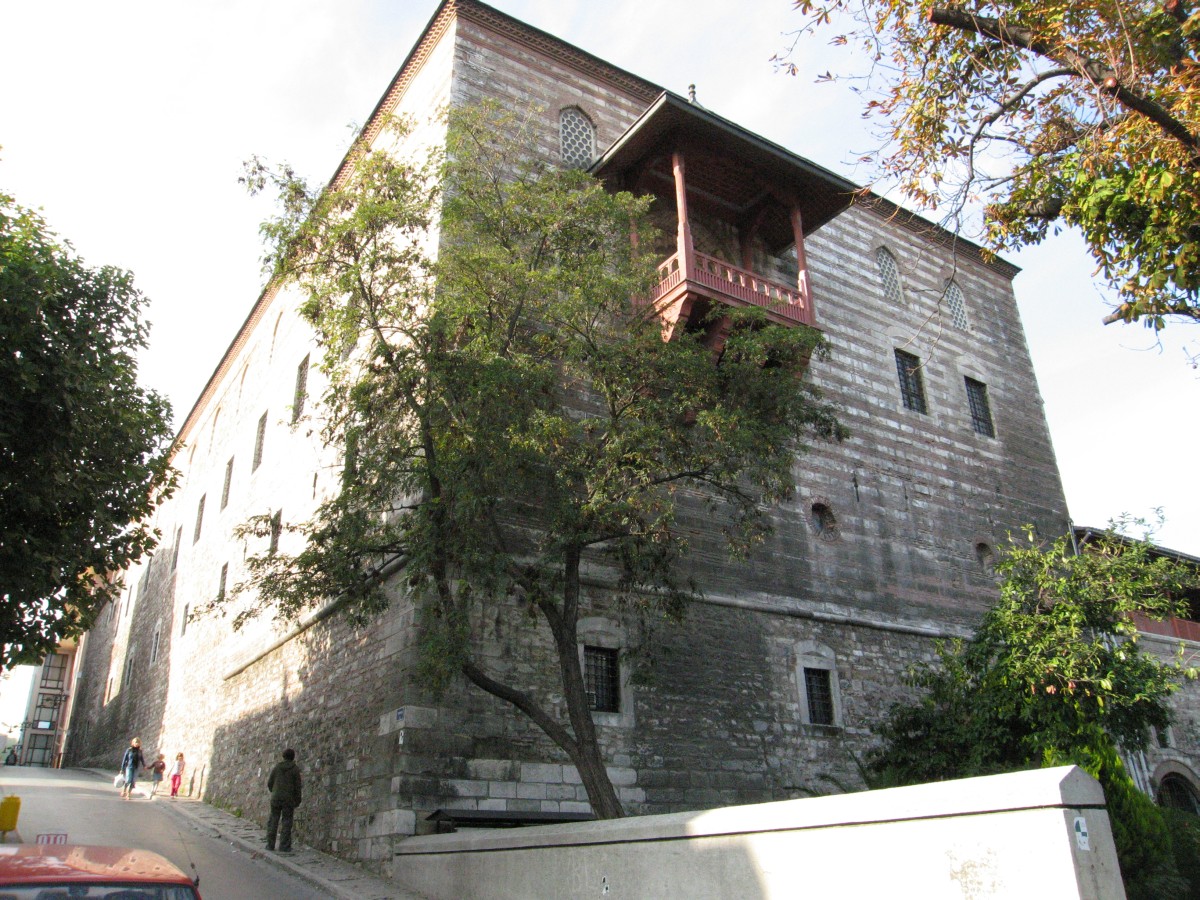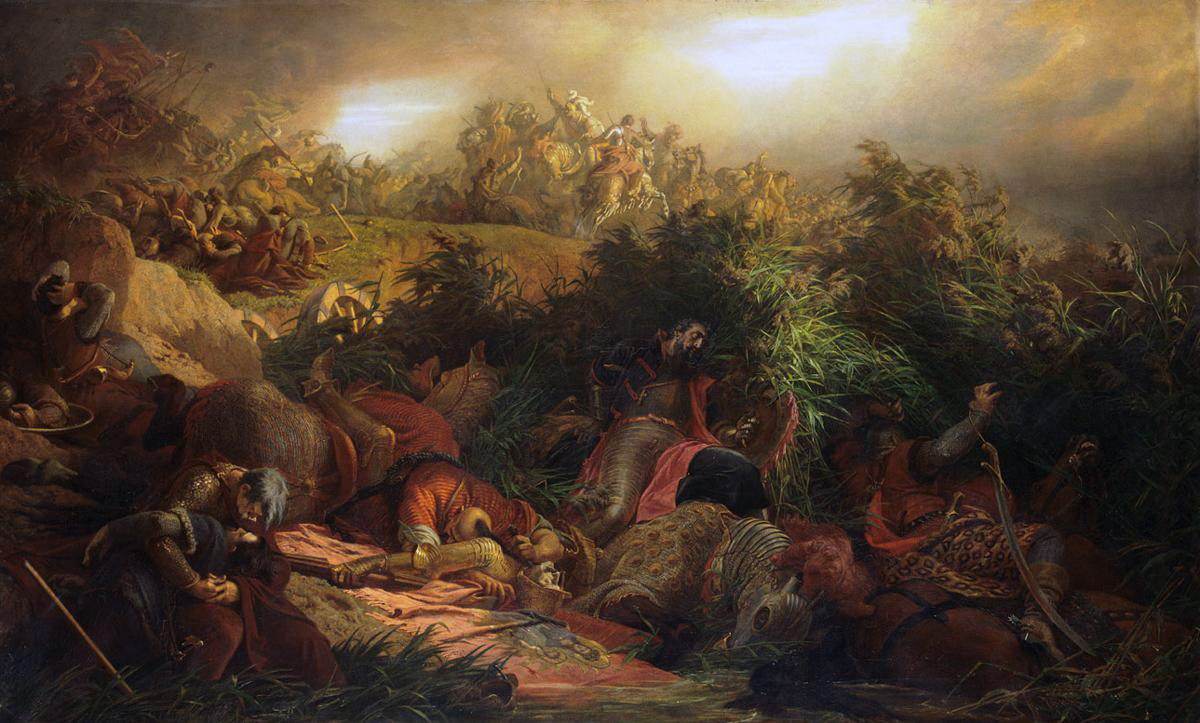|
Ottoman–Safavid War (1532–1555)
The Ottoman–Safavid War of 1532–1555 was one of the many military conflicts fought between the two arch rivals, the Ottoman Empire led by Suleiman the Magnificent, and the Safavid Empire led by Tahmasp I. Ottoman territorial gains were confirmed in the Peace of Amasya. Background The war was triggered by territorial disputes between the two empires, especially when the Bey of Bitlis decided to put himself under Persian protection.''The Cambridge history of Islam'' by Peter Malcolm Holt, Ann K. S. Lambton, Bernard Lewis p. 33/ref> Also, Tahmasp had the governor of Baghdad, a sympathiser of Suleiman, assassinated. On the diplomatic front, the Safavids had been engaged in discussions with the Habsburgs for the formation of a Habsburg–Persian alliance that would attack the Ottoman Empire on two fronts. Two Iraqi Expedition The Ottomans, first under the Grand Vizier Ibrahim Pasha, and later joined by Suleiman himself, successfully attacked Safavid Iraq, recaptured Bitlis, a ... [...More Info...] [...Related Items...] OR: [Wikipedia] [Google] [Baidu] [Amazon] |
Süleymanname
The ''Süleymannâme'' (or ''Sulaiman-nama''; lit. "Book of Suleiman") is an illustration of Suleiman the Magnificent's life and achievements. In 65 scenes the miniature paintings are decorated with gold, depicting battles, receptions, hunts and sieges. Written by Fethullah Arifi Çelebi in Persian language, Persian verse, and illustrated by five unnamed artists, the ''Süleymannâme'' was the fifth volume of the first illustrated history of the Ottoman dynasty. It was written in the manner of the Iranian ''Shahnameh'' epic. The original version of the ''Süleymannâme'' lies in the Topkapi Palace Museum in Istanbul and there is another manuscript in Astan Quds Razavi, the manuscript numbered as manuscript 4249 in Astan Quds Razavi library. The ''Süleymannâme'' is the fifth volume of the ''Shahnama-yi Al-i Osman'' (The Shahnama of the House of Osman) written by Arif Celebi. It is an account of Suleiman's first 35 years of his reign as ruler from 1520 to 1555. The portrayal of S ... [...More Info...] [...Related Items...] OR: [Wikipedia] [Google] [Baidu] [Amazon] |
Tahmasp I
Tahmasp I ( or ; 22 February 1514 – 14 May 1576) was the second shah of Safavid Iran from 1524 until his death in 1576. He was the eldest son of Shah Ismail I and his principal consort, Tajlu Khanum. Tahmasp ascended the throne after the death of his father on 23 May 1524. The first years of Tahmasp's reign were marked by civil wars between the Qizilbash leaders until 1532, when he asserted his authority and began an absolute monarchy. He soon faced a long-lasting war with the Ottoman Empire, which was divided into three phases. The Ottoman sultan, Suleiman the Magnificent, tried to install his own candidates on the Safavid throne. The war ended with the Peace of Amasya in 1555, with the Ottomans gaining sovereignty over Iraq, much of Kurdistan, and western Georgia. Tahmasp also had conflicts with the Uzbeks of Bukhara over Khorasan, with them repeatedly raiding Herat. In 1528, at the age of fourteen, he defeated the Uzbeks in the Battle of Jam by using artillery. Ta ... [...More Info...] [...Related Items...] OR: [Wikipedia] [Google] [Baidu] [Amazon] |
Ottoman Empire
The Ottoman Empire (), also called the Turkish Empire, was an empire, imperial realm that controlled much of Southeast Europe, West Asia, and North Africa from the 14th to early 20th centuries; it also controlled parts of southeastern Central Europe, between the early 16th and early 18th centuries. The empire emerged from a Anatolian beyliks, ''beylik'', or principality, founded in northwestern Anatolia in by the Turkoman (ethnonym), Turkoman tribal leader Osman I. His successors Ottoman wars in Europe, conquered much of Anatolia and expanded into the Balkans by the mid-14th century, transforming their petty kingdom into a transcontinental empire. The Ottomans ended the Byzantine Empire with the Fall of Constantinople, conquest of Constantinople in 1453 by Mehmed II. With its capital at History of Istanbul#Ottoman Empire, Constantinople (modern-day Istanbul) and control over a significant portion of the Mediterranean Basin, the Ottoman Empire was at the centre of interacti ... [...More Info...] [...Related Items...] OR: [Wikipedia] [Google] [Baidu] [Amazon] |
Kara Ahmed Pasha
Kara Ahmed Pasha (executed 29 September 1555) was an Ottoman statesman of Albanian origin. He was Grand Vizier of the Ottoman Empire between 1553 and 1555.İsmail Hâmi Danişmend, Osmanlı Devlet Erkânı, Türkiye Yayınevi, İstanbul, 1971 (Turkish) He led the Ottoman troops that captured the Hungarian fortress of Temesvár, defended by the troop of István Losonczy, on 26 July 1552.Sadık Müfit Bilge, "Macaristan'da Osmanlı Hakimiyetinin ve İdarî Teşkilatının Kuruluşu ve Gelişmesi", ''Ankara Üniversitesi Osmanlı Tarihi Araştırma ve Uygulama Merkezi Dergisi'' (OTAM), Sayı: 11 Sayfa: 033-081, 2000p. 59. That year, his army took three other castles (Veszprém, Szolnok and Lipova) before failing at the siege of Eger. After Sultan Suleiman executed his eldest son Şehzade Mustafa in October 1553, there appeared some sort of dissatisfaction and unrest among soldiers who blamed Rüstem Pasha for Mustafa's death. Then Suleiman dismissed Rüstem Pasha and appointe ... [...More Info...] [...Related Items...] OR: [Wikipedia] [Google] [Baidu] [Amazon] |
Alqas Mirza
Abu'l Ghazi Sultan Alqas Mirza (), better known as Alqas Mirza (; 15 March 1516 – 9 April 1550), was a Safavid prince and the second surviving son of king (shah) Ismail I (r. 1501–1524). In early 1546, with Ottoman help, he staged a revolt against his brother Tahmasp I (r. 1524–1576), who was king at the time. Early life Alqas Mirza was born on 15 March 1516 (10 Safar 922 AH) in a winter camp near Tabriz as Shah Ismail's third son. According to a source, his name was a word play on ''Qisas'' (retaliation) referring to a desire to beat Ottomans back after Battle of Chaldiran. According to ''Tāriḵ-e Rawżat al-ṣafā-ye nāṣeri'' by Reza-Qoli Khan Hedayat, he was born as soon as the news of Selim I's death reached Safavid realm. His mother was Khanbegi khanum Mawsillu, daughter of Sufi Khalil Beg Mawsillu. His military career started as early as in 1528, participating in Battle of Jam (near Zurabad) against Uzbeks. At the age of 16, he was trusted with the governor ... [...More Info...] [...Related Items...] OR: [Wikipedia] [Google] [Baidu] [Amazon] |
Şehzade Bayezid
Şehzade Bayezid (; 1527 – 25 September 1561) was an Ottoman prince as the son of Sultan Suleiman the Magnificent and Hürrem Sultan. Early years Bayezid was born in 1527 in Constantinople during the reign of his father, Suleiman the Magnificent. His mother was Hürrem Sultan, an Orthodox priest's daughter, who was the current Sultan's concubine at the time. In 1533 or 1534, his mother, Hürrem, was freed and became Suleiman's legal wife.Kinross, Patrick (1979). The Ottoman centuries: The Rise and Fall of the Turkish Empire. New York: Morrow. . p, 236. He had four brothers, Şehzade Mehmed, Şehzade Selim (future Selim II), Şehzade Abdullah and Şehzade Cihangir, and a sister Mihrimah Sultan. Between 26 November and 8 December 1539, a ceremony was held and celebrating circumcision of Bayezid and his younger brother Cihangir. The entire city and palace were involved in the elaborate event. Representatives from Ferdinand I, Holy Roman Emperor, the French, and the Venetia ... [...More Info...] [...Related Items...] OR: [Wikipedia] [Google] [Baidu] [Amazon] |
Selim II
Selim II (; ; 28 May 1524 – 15 December 1574), also known as Selim the Blond () or Selim the Drunkard (), was the sultan of the Ottoman Empire from 1566 until his death in 1574. He was a son of Suleiman the Magnificent and his wife Hurrem Sultan. Selim had been an unlikely candidate for the throne until his brother Mehmed died of smallpox, his half-brother Mustafa was strangled to death by the order of his father and his brother Bayezid was killed on the order of his father after a rebellion against him and Selim. During his reign, his grand vizier Sokollu Mehmed Pasha exerted significant control over state governance. The conquest of Cyprus and Tunis were notable achievements during his reign but setbacks occurred in the Battle of Lepanto and the failed capture of Astrakhan as part of the war with Russia. Early years Selim was born on 28 May 1524 in Constantinople during the reign of his father, Suleiman the Magnificent. His mother was Hürrem Sultan, an Orthodox pries ... [...More Info...] [...Related Items...] OR: [Wikipedia] [Google] [Baidu] [Amazon] |
Şehzade Mustafa
Şehzade Mustafa (; – 6 October 1553) was an Ottoman prince, son of sultan Suleiman I and his concubine Mahidevran Hatun. He was Suleiman's oldest survived son, the governor of Manisa from 1533 to 1541 and of Amasya from 1541 to 1553, when he was executed by his father's order on charges of sedition and treason. Early life Mustafa was born around 1516 or 1517 in Manisa to Suleiman, when he was a prince, and his concubine Mahidevran Hatun. Suleiman ascended the throne in 1520, after the death of his father Selim I and his princely harem from Manisa which included Mustafa and his mother, Mahidevran came to reside in the Old Palace in Constantinople some weeks after his grandmother- who had arrived on December 18, 1520. Following the deaths of his older half-brothers, Mahmud and Murad in October 1521, Mustafa became his father's only heir besides the newborn Mehmed born of the new and only favourite concubine of his father's reign, Hürrem Sultan, from whom further so ... [...More Info...] [...Related Items...] OR: [Wikipedia] [Google] [Baidu] [Amazon] |
Rüstem Pasha
Rüstem Pasha (; ; 1505 – 10 July 1561) was an Ottoman statesman who served as Grand Vizier to Sultan Süleyman the Magnificent. Rüstem Pasha is also known as Damat Rüstem Pasha (the epithet ''damat'' meaning 'son-in-law') as a result of his marriage to the sultan's daughter, Mihrimah Sultan, in 1539. He is regarded as one of the most influential and successful grand viziers of the Ottoman Empire. Rustem Pasha was taken as a child to Constantinople (modern-day Istanbul), where he built a military and bureaucratic career under the protection of Hürrem Sultan, Süleyman's favorite and legal wife and Mihrimah's mother. His brother Sinan Pasha was an Ottoman grand admiral. Early life Rustem is referred to as a Bosnian by Tayib Osman-zade Ahmed, author of ''Hadikatul vuzara'' and the Turkish encyclopedia ''Kamus-ul-alam''. He is also referred to as a Bosnian by the Turkish historiographer Mustafa Âlî. However, other sources suggest different Croatian, Bosnian or Serbian ... [...More Info...] [...Related Items...] OR: [Wikipedia] [Google] [Baidu] [Amazon] |
İskender Çelebi
İskender Çelebi (; died March 1535) was a long-serving '' defterdar'' (finance secretary) of the Ottoman Empire during the reign of Suleiman the Magnificent. Possibly the most notable events which befell him took place during the war of 1532–35 against the Safavid Empire. In October 1532, he was ordered to accompany the Grand Vizier, Pargalı Ibrahim Pasha, who was the general of the field army and was heading to the Safavid border from Istanbul. Until the campaign, Pargalı Ibrahim Pasha had regarded İskender Çelebi as a father figure who could provide him with valuable knowledge about his craft. İskender Çelebi was in favour with the Sultan, who personally cautioned Pargalı Ibrahim Pasha not to go against him. Because of this İskender Çelebi became a dominant figure in the campaign. He was even able to order Pargalı Ibrahim Pasha, who had been moving from Aleppo to Baghdad, to go to Azerbaijan instead. Although this act went against Pargalı Ibrahim Pasha's wishes, h ... [...More Info...] [...Related Items...] OR: [Wikipedia] [Google] [Baidu] [Amazon] |
Pargalı Ibrahim Pasha
Pargalı Ibrahim Pasha ( 149515 March 1536), was the first Grand Vizier of the Ottoman Empire appointed by Sultan Suleiman the Magnificent. Ibrahim, born as Orthodox Christian, was enslaved during his youth. He and Suleiman became close friends in their youth. In 1523, Suleiman appointed Ibrahim as grand vizier to replace Piri Mehmed Pasha, who had been appointed in 1518 by Suleiman's father, the preceding Sultan Selim I. Ibrahim remained in office for the next 13 years. He attained a level of authority and influence rivaled by only a handful of other grand viziers of the Empire, but in 1536, he was executed on Suleiman's orders and his property (much of which was gifted to him by the Sultan) was confiscated by the state. Biography Origin Ibrahim was born to Orthodox Christian parents in Parga, Epirus, then part of the Republic of Venice. His ethnicity is unknown, but he probably originally spoke a Slavic dialect and also knew Greek and Albanian. His father was either a sai ... [...More Info...] [...Related Items...] OR: [Wikipedia] [Google] [Baidu] [Amazon] |
Suleiman The Magnificent
Suleiman I (; , ; 6 November 14946 September 1566), commonly known as Suleiman the Magnificent in the Western world and as Suleiman the Lawgiver () in his own realm, was the List of sultans of the Ottoman Empire, Ottoman sultan between 1520 and his death in 1566. Under his administration, the Ottoman Empire ruled over at least 25 million people. After succeeding his father Selim I on 30 September 1520, Suleiman began his reign by launching military campaigns against the Christendom, Christian powers of Central and Eastern Europe and the Mediterranean; Siege of Belgrade (1521), Belgrade fell to him in 1521 and Siege of Rhodes (1522), Rhodes in 1522–1523, and at Battle of Mohács, Mohács in 1526, Suleiman broke the strength of the Kingdom of Hungary in the Middle Ages, Kingdom of Hungary. Presiding over the apex of the Ottoman Empire's economic, military, and political strength, Suleiman rose to become a prominent monarch of 16th-century Europe, as he personally led Arm ... [...More Info...] [...Related Items...] OR: [Wikipedia] [Google] [Baidu] [Amazon] |






